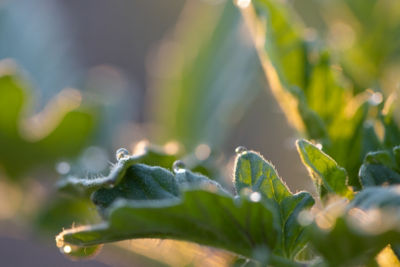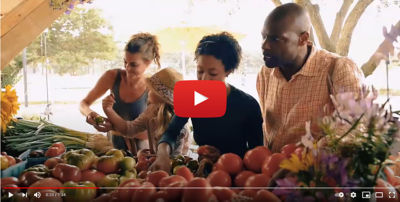Variety Profiles At De Ruiter® brand, we continuously innovate for long-term solutions to challenges like ToBRFV.
The De Ruiter® Brand Beef Steaks with IntermediateResistance to Tomato Brown Rugose Fruit Virus “ToBRFV”.
With the appearance of ToBRFV, the industry has been in need of a way to mitigate the impact of the virus without compromising on quality or yield in their products. Since launching in 2022 Ferreira has demonstrated the potential for balance between ToBRFV protection and fruit performance that continued through 2024.
Given this, we have updated our original 2022 agronomic advice document to assist growers and potentially maximize variety performance.
Ferreira and Novero have very similar plant behavior; therefore, we created this agronomic advice document as one fit for both varieties.

Features
// High yield potential
// Ferreira average fruit weight of 265-275 grams
// Novero average fruit weight of 250-260 grams
// Intermediate Resistance to ToBRFV
// Generative plant
// Open plant habit
// Early fruit producing variety
// Suitable for Fall Plantings and year-round environments
Plant Characteristics
Ferreira and Novero have shown to be generative varieties. Ferreira and Novero have an open canopy and low LAI (Leaf Area Index) during summer months. Both are early producing hybrids with fast fruit setting.
Growing Ferreira and Novero under High-Tech Greenhouses
Ferreira and Novero are generative in nature. All agronomic practices should be driven towards keeping the crop in balance and with good vigor. We also recommend crop registration and follow plant management strategy accordingly. Consider variables such as crop length, fruit specifications, labor, head density and existing tools available to successfully grow your crop. The combination of these factors and the greenhouse set up will determine how to best grow your crop.
Seeding
For “year-round” crops in the hightech greenhouse industry, the seeding schedule follows the traditional crop cycle in Canada/US, occurring mostly in November and in December. It is strongly recommended the plants be grafted on a superior rootstock such as, DR0141TX and preferably pinched on the 2nd true leaf. The recommended transplant months are January, February, and March. Majority commercially grown crop are grafted 2:1 plants.
Ferreira and Novero can also be grown as fall crops, and it follows the traditional seeding and transplant dates for fall crops.
Transplanting
Usually, plants are transplanted from 32 to 57 days old, with 20-40 cm height, on your preferred substrate. Greenhouse transplant and spacing varies according to the greenhouse set up. Generally in Southern Ontario, beef steak varieties grown in stem density around 2.8-3.0 heads/m2 and final stem density ranges between 3.1-3.4 depending on the light level, structure type and planting cycle.
Growing the crop at the recommended head density is critical because in summertime the LAI will tend to become too low and may directly influence the crop vigor, the fruit quality, and the odds of having BER (Blossom End Rot).
First Weeks Growing the Crop
When Ferreira and Novero are transplanted in January and February, utilize standard growing practices and perform regular crop work for beef steak tomato crops during the first couple of weeks. Good root development in the substrate should be a focus.
Practice crop management like desuckering, deleafing on weekly basis. Avoid deleafing in humid conditions and/or late afternoon. Additionally, following sanitation procedures between plants (sanitizing pruning shears and apply sillica paste on wounds) helps to potentially prevent disease outbreaks.
Ferreira and Novero can be prone to fruit fall when conditions are favorable for this physiological disorder. Usually, fruit fall starts under comparatively low light levels about 3 weeks before the 1st harvests and persists while conditions are favorable to it. To help minimize fruit fall in a beef steak crop, it can be beneficial to apply multiple combined strategies such as:
// Avoid temperatures above 18°C (64°F) when light levels are under 300 watts/m2.
// Create an active environment with good air flow in the greenhouse.
// Avoid the combination of “warm temperatures” + “high humidity”. The temperature applied should be always proportional to the light levels present in the greenhouse. If for any reasons the crop is too vigorous, use crop work such as leaf removal and nutritional tools rather than applying warm temperature above 18°C (64°F) early in the morning and late in the day.
// Avoid abrupt handling of the plants by shaking the stems when doing crop work such as lowering and removing leaves. Crop must be handled gently when lowering. It is recommend to lower at a bi-weekly interval, and harvest fruits prior to lowering. Hourly work might be the best option rather than piecework when lowering the crop if fruit fall is observed.
// Avoid applying high temperatures in the heating pipe (i.e. 70°C, 158°F). If outdoor temperatures are too cold, rather limit the max temp in the heating pipes and leave the greenhouse slightly cooler.
// If growing under artificial lights, ensure the temperature is not higher than 18°C (64°F) during the night when the lights are turned on.

Agronomics and Cropping Tips
ENVIRONMENT
// High tech plastic greenhouse or glasshouse
SEASON
// Year-round and Lit crop cycles
PLANTING RATE
// 2.8-3.0 heads/m2
SPECIFIC ADVICES
// Graft on superior tomato rootstock DRO141TX
// Apply Vegetative steering
Harvesting and End of the Crop Cycle
Growers should expect early harvests. The first fruits produced should have low incidence of end scars; if present, the scars should be small. If you are finding large scars often, then it is an indication the crop was grown too cold in the early stages of development.
Greenhouse Climate, Irrigation and nutrients should be managed according to light levels. We recommend weekly or biweekly water analysis and plant registration for plant management strategy. Depending on light levels, best to manage optimal range of substrate pH 5.5-5.8 for ideal nutrients uptake. As per your daily targets, light levels regulate EC 3.0-4.5 mS/cm by adjusting irrigation frequency, duration and drainage control. Avoid over-watering as it may cause yellow/hollow stem. Both varieties are recommended to grow in optimal day temperature range of 18-21°C (64°F-70°F) depending on light level and intensity. Night temperatures should stay in range between 17-19°C(63°F-66°F) .
Depending on the plant health, pre night range can be adjusted to 2-4 hours and not below 16°C(61°F) .
To steer plants in balance; humidity and CO2 levels are equally important, so keep the climate active by ventilation, air circulation and run CO2 within the range of 800- 1200ppm. Ideally, plants should be active before increasing CO2 levels. At end of the day let CO2 level fall so it does not exceed above the plant needs.
In preparation for the summer months and during summer months, when crop is fully loaded, keep crop vigor best possible on the “strong side” by managing conservative deleafing, pruning to less fruits per set and running cool temperatures when light levels go under 300 W/m2.
Fruits should be harvested at the designated ripening stage according to the marketing needs. For Ferreira and Novero, the fruit quality during the summer and fall months is considered standard for a beef steak variety and is similar to the DeRuiter variety Torero. Based on findings during testing cycles, we observed that Ferreira and Novero demonstrated a good shelf life.
For uniform fruit setting and ideal fruit size we recommend pruning to 3 fruits per set and with ideal fruit load between 19-24 fruits per stem.
Check the crop vigor frequently to determine pruning and leaf removal decisions. During summer months, it is recommended to keep more leaves on the plants to help cool down the greenhouse. If leaf removal is delayed occasionally, Ferreira and Novero should not respond negatively, unlike a vegetativelystrong variety such as Foronti.
During summer months when the heat is intense and nights are warm, some fruit abortion can occur at early stages of development. Consider doing some white washing of the greenhouse to minimize this issue.
In addition to maintaining optimal calcium levels in the nutrient solution, utilize production practices that promote a strong and healthy root system throughout the cycle to help avoid BER. Ferreira and Novero have shown low susceptibility to BER; however, BER can occur in the presence of weaker roots because of the lower LAI of the varieties.
In closing, keep strong vigor and well balanced plants to help maximize Ferreira’s and Novero’s yield potential.
Best Practices
To maximize genetic potential, follow good sanitation, do not interplant on old or used substrate. It is strongly recommended the plants be grafted on a superior tomato rootstock such as, DR0141TX.
Agronomics and Cropping Tips
Ff: Lead mold
Fol: Fusarium wilt
For: Fusarium crown and root rot
On: Powdery mildew
ToBRFV: Tomato brown rugose fruit virus
ToMV: Tomato mosaic virus, strain 0-2
ToTV: Tomato torrado virus
HR = High Resistance
IR = Intermediate Resistance
We wish you a successful crop of Ferreira and Novero!
Additional Information
*HR = High Resistance. IR = Intermediate Resistance. To find out more about disease resistance and the applicable levels of disease resistance, visit www.worldseed.org, and view the “Definition of the Terms Describing the Reaction of Plants to Pests for the Vegetable Industry” paper in the Vegetable Resources section.
Performance may vary, from location to location and from year to year, as local growing, soil and environmental conditions may vary. Growers should evaluate data from multiple locations and years whenever possible and should consider the impacts of these conditions on their growing environment.
The recommendations in this material are based upon trial observations and feedback received from a limited number of growers and growing environments. These recommendations should be considered as one reference point and should not be substituted for the professional opinion of, entomologists or other relevant experts evaluating specific conditions.
Bayer, Bayer Cross, De Ruiter & Greenhouse Leaf Design® and De Ruiter® are registered trademarks of Bayer Group. ©2025 Bayer Group. All rights reserved.



